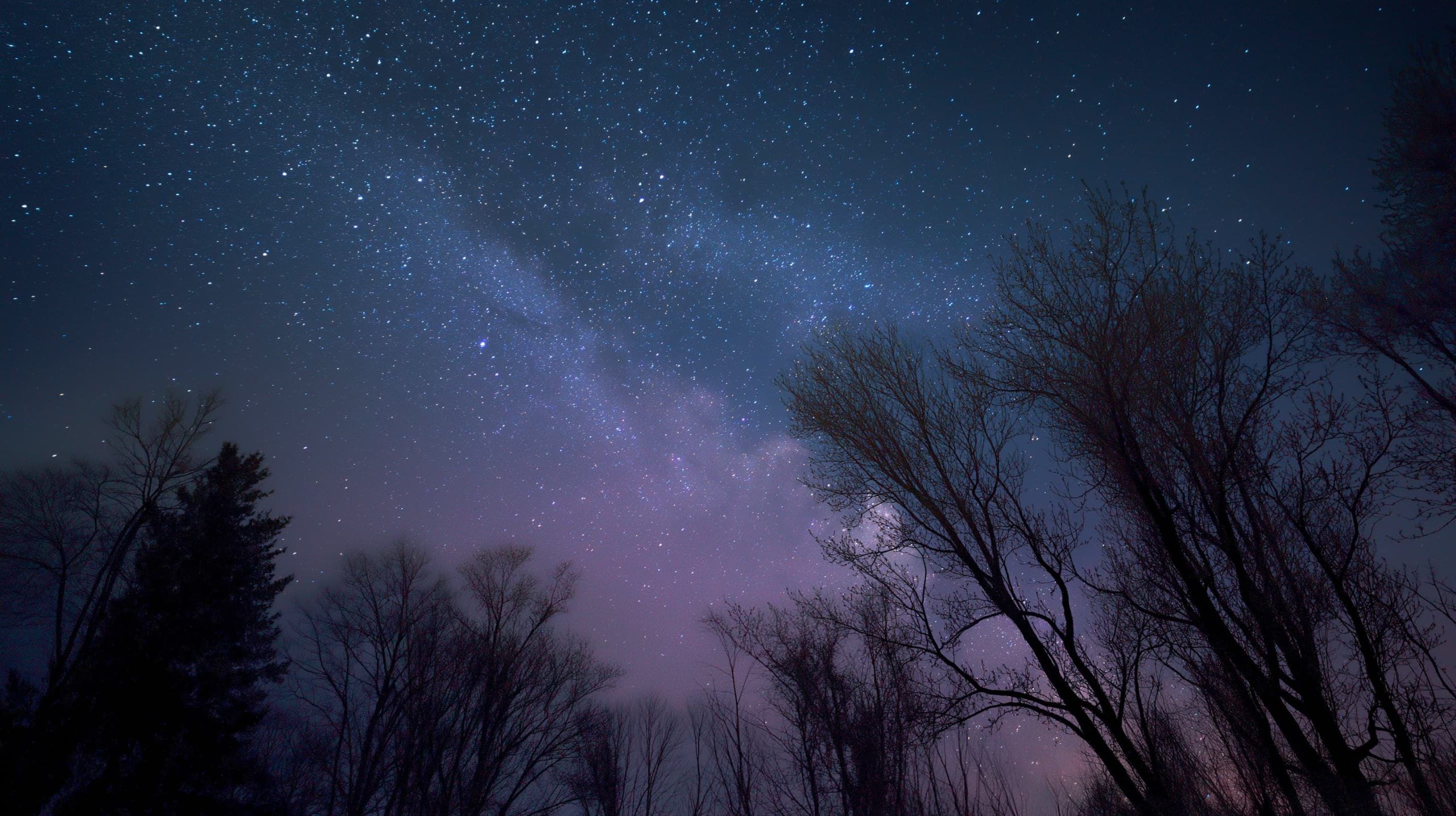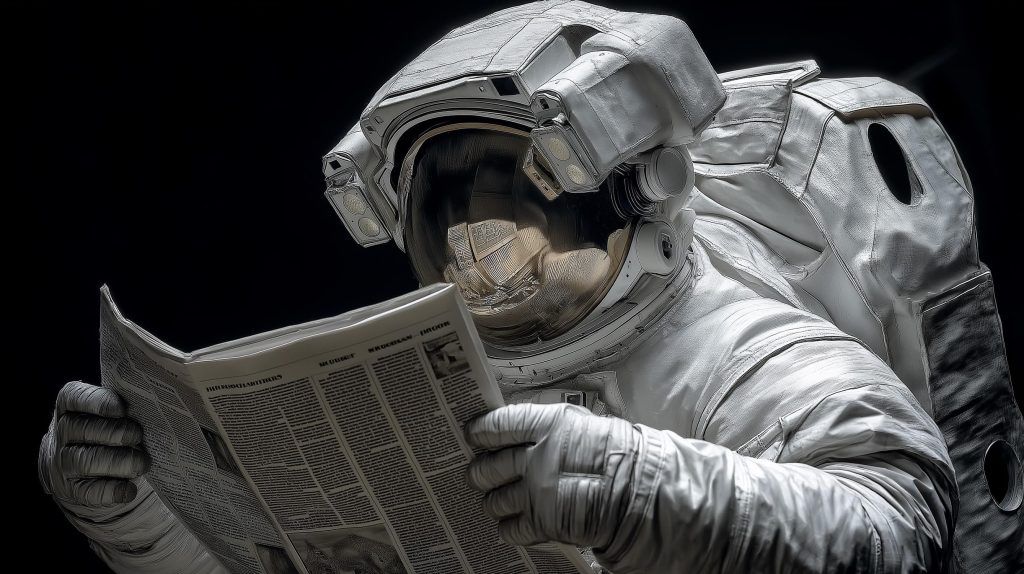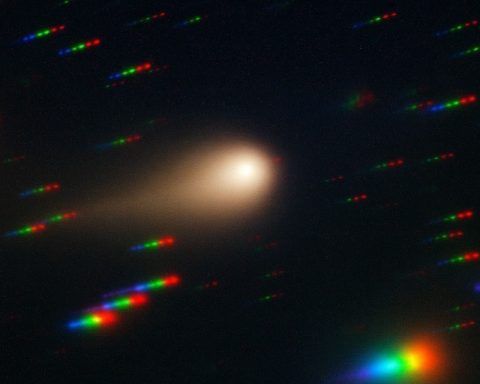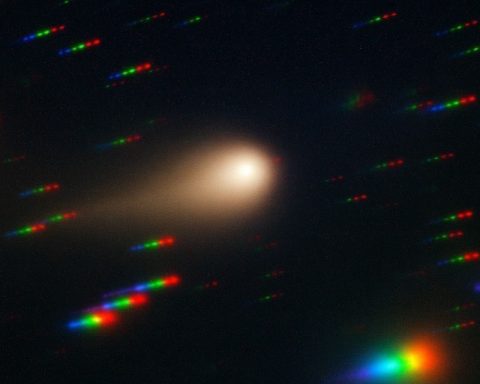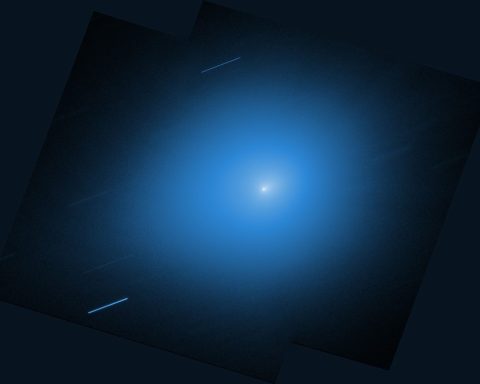- The Perseid meteor shower is active August 9–10, 2025, with peak activity expected August 12–13 and up to 100 meteors per hour at peak under ideal dark skies.
- The full Moon, known as the Sturgeon Moon, reaches full on August 9, 2025 at 3:55 a.m. EDT (07:55 GMT) and will dominate the sky that night.
- The Perseids radiate from the constellation Perseus, which rises in the northeast after midnight, making the late-night to pre-dawn hours the best viewing time.
- Under the near-full Moon, bright Perseids can still streak across the sky, especially in the pre-dawn hours.
- Venus (-4 magnitude) and Jupiter (-2 magnitude) make a pre-dawn conjunction in the eastern sky on August 9–10, 2025, visible around 4:00–5:00 a.m. local time and fitting in the same binocular field.
- The closest Venus-Jupiter pairing occurs August 11–12, when the planets are about 1 degree apart.
- Mercury will not be visible this weekend; it will pop up in the morning twilight by the second half of August.
- Saturn rises around 10:30 p.m. in the east and is high in the southern sky by dawn, with magnitude about 0.8 and rings still nearly edge-on.
- Noctilucent clouds may appear Aug 9–10 at high latitudes, around 80 km up, glowing electric blue after sunset and sometimes again before dawn.
- SpaceX plans Falcon 9 launches on Aug 9 (24 Starlink satellites from Vandenberg) and Aug 10 (dozens more from Cape Canaveral), potentially producing a visible Starlink satellite train after sunset.
The nights of August 9–10, 2025 are brimming with celestial sights, from a brilliant full moon to shooting stars and planets converging at dawn. Whether you’re a seasoned astronomer or a casual stargazer, this weekend offers a cosmic double-feature of meteor showers, planetary alignments, possible auroras, and other night-sky wonders. Read on for a full skywatching guide – including when and where to look, expert tips, and what you might expect to see – so you don’t miss a moment of this celestial spectacle.
Perseid Meteor Shower Fights the Moonlight
One of the year’s most anticipated meteor displays – the Perseid meteor shower – is active and ramping up this weekend. The Perseids typically produce up to 100 meteors per hour at peak under ideal dark skies [1], and August is known as “meteor month” for Northern Hemisphere observers because of this beloved shower [2]. Peak activity is expected on the night of August 12–13, but you’ll already catch increased Perseid “shooting stars” on the nights of August 9–10. The bad news: a glaring nearly-full moon threatens to wash out many of the fainter meteors. “Unfortunately, as luck would have it, 2025 will see the moon turn full on Aug. 9” just before the Perseids’ peak, notes veteran astronomer Joe Rao [3]. That means bright moonlight will flood the sky most of the night, hiding the dimmer streaks. In fact, a waning gibbous moon is “just about the worst moon phase for meteor observing” [4].
But don’t count the Perseids out! Many Perseids are fast and exceptionally bright, often leaving long-lasting trails, which means “such bright, streaky Perseids can burn right through a moonlit sky” [5]. As Rao assures, “while moonlight might steal the spotlight, it won’t steal the Perseids’ show” [6]. Observers can still expect to see several bright meteors each hour during the pre-dawn hours, when Perseid activity is highest [7]. Under truly dark, clear skies (if you can hide from the Moon’s glow), peak rates might approach a few dozen meteors per hour, but under moonlit conditions you may only spot a dozen or so meteors in an hour [8]. The Perseids’ radiant (the point in the sky they appear to originate from) lies in the constellation Perseus, which rises in the northeast after midnight. Thus, the best time to watch is the late-night to pre-dawn hours, when Perseus climbs higher in the sky [9]. This holds true worldwide, though viewers in the Northern Hemisphere will have a much better show than those far south of the equator (where Perseus stays low) [10].
Expert Tip: To maximize your meteor count, find a dark location and observe during the wee hours before dawn. Keep the bright Moon out of sight – for example, position yourself so that a building, hill, or tree blocks the Moon’s glare [11]. Lie back and gaze about 45° above the horizon (not straight up) for the widest view of the sky [12]. Give your eyes 15–20 minutes to adapt to the darkness, and avoid checking your phone. Patience is key: meteors often come in spurts, so plan to relax under the stars for at least an hour. And if you do catch a brilliant Perseid fireball streaking across the sky, enjoy the moment – some brighter meteors may leave glowing “smoke” trails (ionized gas trails) that linger and twist for a few seconds [13], a memorable sight for any skywatcher.
Full Sturgeon Moon Shines Bright
As the Perseids compete for attention, the Moon is putting on its own show this weekend – perhaps too good of a show! On Saturday, August 9, the Moon reaches full phase at 3:55 a.m. EDT (07:55 GMT) [14]. This full moon is traditionally known as the “Sturgeon Moon,” a name originating from Native American fishing lore when giant sturgeon were most readily caught in the Great Lakes [15]. In different cultures it’s also been called the Red Moon, Green Corn Moon, or Grain Moon [16] – but by any name, it will be brilliant. The Moon will rise around sunset and dominate the sky all night on Aug. 9 and 10, drowning out all but the brightest stars with its silvery light. (If you step outside at dusk, you’ll likely spot it immediately – a big golden orb rising in the east.)
Because the Moon’s orbit is a little offset, the precise moment of full phase is the morning of Aug. 9 in the Americas; however, both Friday and Saturday nights will feature a virtually full moon. In fact, skywatchers on Friday evening (Aug. 8) will see the moon ~99% illuminated, and on Saturday evening (Aug. 9) it will be just slightly past full [17] – you’d need a keen eye to notice the difference. This particular full moon will shine among the faint stars of Capricornus in the southern sky [18]. Don’t expect it to climb very high if you’re in mid-northern latitudes; in August the Moon’s path is low (since the summer ecliptic sits low in the sky), so the full Moon will hover lower above the horizon than it does in winter [19]. This can create stunning photo opportunities when the moonlight reflects off water or when the low moon looks oversized and orange due to atmospheric perspective – the classic “harvest moon” effect arriving a bit early.
While beautiful, the lunar brightness will pose a challenge for observing faint phenomena like meteors, auroras, or the Milky Way this weekend. If you’re out stargazing, try to avert your eyes from the Moon for better night vision, or observe from a spot where you can put something (even your hand) between you and Luna’s glare. The next full moon won’t occur until early September, so enjoy this luminous Sturgeon Moon while it’s up – it’s one of the summer’s most radiant night-sky features. (Fun fact: This August 9 full moon is not a “supermoon” by most definitions – those will come later in the fall [20] – but it’s still plenty bright and gorgeous!)
Venus and Jupiter’s Dazzling Pre-Dawn Conjunction
Early risers, rejoice: the two brightest planets in our sky, Venus and Jupiter, are putting on a dawn spectacle that culminates this weekend. Throughout the first half of August, brilliant Venus has been closing in on Jupiter in the eastern pre-dawn sky, and on August 11–12 they will appear nearly on top of each other, about only 1 degree apart (that’s roughly a finger’s width at arm’s length!) [21]. On the mornings of August 9 and 10, you can already catch this cosmic rendezvous in progress: look east during the hour before sunrise (around 4:00–5:00 a.m. local time). Venus, the “Morning Star,” blazes extremely bright (-4 magnitude) and Jupiter shines just below it, somewhat dimmer but still very conspicuous (around -2 magnitude) [22] [23]. The pair will be so close together that they fit in the same field of view through binoculars, and to the naked eye they form an eye-catching double “star” low in the dawn twilight. “Close conjunctions like this are always special to observe, as although they are line-of-sight effects, the impression they give of the scale of our solar system is palpable,” one skywatching guide explains [24]. In other words, seeing Venus and Jupiter huddle together in the sky is a striking reminder of our planetary neighborhood in motion.
This Venus-Jupiter conjunction is visible around the world – anywhere with an unobstructed view of the low eastern horizon in the early morning should spot the duo. (If you’re in the Southern Hemisphere, note that the planets will appear lower in your sky because it’s late winter there, but you should still see them rising before the Sun.) The planets will drift even closer over the weekend and into Monday/Tuesday (Aug 11–12), so keep watching each morning as their configuration changes. At their tightest on Aug 11–12, Venus will sit just to the lower right of Jupiter, almost touching it from our perspective [25]. After that, Venus will swing lower each day (heading toward the Sun) while Jupiter climbs higher. Mark your calendar for Aug 19–20 as well: a delicate crescent Moon will join Venus and Jupiter in the dawn sky on those dates, forming a gorgeous triad [26] – a little outside our current weekend, but worth the mention for eager skywatchers.
Planetary Highlights at a Glance
Aside from Venus and Jupiter’s morning meet-up, all the other bright planets make an appearance in August’s sky as well. Here’s where to find each planet on the nights of Aug 9–10 (and the coming weeks):
- Mercury: Not visible this weekend – the innermost planet is lingering too close to the Sun. (It will pop up in the morning twilight by the second half of August, very low on the horizon [27].)
- Venus: Extremely brilliant “morning star” in the east before sunrise (~3:00–5:00 a.m. local time). Venus stands about 20°–30° above the horizon at dawn, outshining everything except the Moon [28].
- Mars: Faint and low in the west after sunset. The Red Planet is only magnitude +1.6 now – about as bright as the Big Dipper’s stars – and sets roughly an hour or two after it gets dark [29]. It’s currently far from Earth and not much to look at, but it’s there for completists.
- Jupiter: Rising in the east in the pre-dawn alongside Venus, but much less bright than Venus [30] (Jupiter looks like a modest white star by comparison). It will get higher and brighter each morning as we head toward its next opposition in January 2026.
- Saturn: The Ringed Planet is coming into prime time! Saturn now rises by ~10:30 p.m. local time in the east and is visible all through the late-night and early-morning hours [31]. By dawn, it will be high in the southern sky. Saturn glows with a steady yellowish light (magnitude ~0.8) among the stars of Pisces. Fun note: Saturn’s rings are still nearly edge-on to us this year, so through a telescope the rings look thin – but Saturn remains a gorgeous sight. (On Aug 11, the waning Moon will actually appear a few degrees from Saturn [32], so if you see the bright Moon, that can help point you to Saturn’s vicinity.)
Keep an eye out for other alignments too: around midnight, Saturn, the Moon, and the bright star Fomalhaut form a broad triangle in the southeastern sky. And in the west at dusk, the star Spica in Virgo twinkles near where Mars is disappearing. While these aren’t as striking as the Venus-Jupiter pairing, they add context to the night sky’s tapestry. All told, throughout the night from dusk till dawn you can observe a mini “planet parade” of Mars, Saturn, Jupiter, and Venus (with Mercury joining in by later this month) [33] [34] – a delightful reminder of our solar system’s clockwork.
Aurora Outlook – Will the Northern Lights Appear?
With the Sun approaching the peak of its 11-year cycle, aurora borealis (northern lights) activity has been on the upswing in 2025 – and skywatchers are always hopeful for a surprise light show. This week, there has been some buzz about a recent solar eruption that might spark auroras. In fact, space weather forecasters were monitoring a coronal mass ejection (CME) that was expected to deliver a glancing blow to Earth’s magnetic field around August 7–8. Initially, geomagnetic storm conditions up to G2 (moderate) were predicted, potentially pushing auroras into mid-latitude skies. NOAA’s Space Weather Prediction Center forecasted a peak at Kp 6 (G2) early on Aug. 8, with a secondary Kp 5 (G1) disturbance later that night [35]. This meant the night of Aug. 8–9 held promise for auroras possibly reaching northern-tier U.S. states (as far south as perhaps Oregon, Iowa, New York) given clear, dark conditions [36] [37]. Indeed, some lucky observers reported auroral glows in those regions on Thursday night. “There’s a window of opportunity for aurora sightings at northern latitudes, weather and dark skies permitting,” one Space Weather update noted ahead of that storm [38].
For the nights of Aug. 9–10, however, the official forecast calls for quieter geomagnetic conditions. The effects of that earlier CME are expected to wane, and no new solar storms are immediately forecast for the weekend. Long-range outlooks from the U.S. Air Force indicate “Quiet” geomagnetic levels on Aug. 9 and 10 (Kp index around 2 or less) [39], with only a minor uptick back to G1 (Kp 4–5) possible by Aug. 11–13 [40] if another disturbance arrives. In short, a major aurora event is unlikely on Aug 9–10. Still, it’s worth remembering that space weather can be unpredictable – a sudden flare on the Sun could always send an unexpected CME our way. If you’re in a high latitude location (Canada, Alaska, Northern Europe, etc.), it never hurts to check the sky around local midnight for that telltale greenish glow low on the horizon. The nearly full Moon will make faint auroras harder to see, so you’d be looking for relatively bright auroral bands or flickers. Typically, the best time to spot aurora is in the middle of the night (around 11 p.m. to 2 a.m. local time) when the sky is darkest and the Earth’s geomagnetic field aligns favorably.
If you want to be proactive, you can monitor real-time aurora forecasts via apps or websites (such as NOAA’s aurora dashboard or the University of Alaska’s Aurora Forecast [41]). These tools will alert you if geomagnetic conditions suddenly spike. For those in southern hemisphere high latitudes (e.g. New Zealand’s South Island or Tasmania), the same advice applies – while aurora australis isn’t specifically predicted on these dates, remain alert on the off chance a surprise solar storm triggers a display of the southern lights.
Bottom line: significant auroras are not expected on Aug. 9–10, but the aurora oval is never static. If you’re located under the auroral zone, keep your fingers crossed and eyes north. And if nothing else, enjoy the bright moonlit landscape and the meteors – the sky will still be putting on a show, even if nature’s neon lights take a brief rest.
Satellite Flyovers and the ISS: Man-Made “Stars”
Not all the night’s moving lights are natural – some are human-made satellites, and this weekend is a great time to spot a few. In fact, you might catch the grandest of them all, the International Space Station (ISS), cruising across the heavens. The ISS is Earth’s brightest artificial satellite and “by far the biggest and brightest of all the man-made objects orbiting Earth” [42]. It orbits about 420 km high and spans a hundred meters across, so it reflects a ton of sunlight. When conditions are right, the Space Station can outshine even Jupiter and Sirius; on its very brightest passes, it can appear 2–3 times brighter than Venus and even flare briefly to magnitude -8 (which is 10+ times brighter than Venus!) [43]. To the naked eye, the ISS looks like a steady, non-blinking bright point gliding across the sky in a matter of a few minutes. Unlike a plane, it has no flashing lights and no sound, and it moves faster than a jet – traversing the sky typically in 4–6 minutes [44] [45].
When to see it? The ISS is only visible when it’s nighttime on the ground but the station is still catching sunlight (so that it glows against the dark sky). That means sightings occur within a couple hours after sunset or before sunrise, never in the deep middle of the night [46]. Right now in early August, many mid-latitude locations are getting evening passes of the ISS. For example, skywatchers across parts of North America and Europe have reported seeing the ISS in the hour or two after dusk, appearing in the west and slowly drifting eastward before fading out. All ISS orbits have different ground tracks, so exact viewing times depend on your location – but it’s easy to find out when to look. NASA’s Spot the Station service lets you sign up for free alerts or check a schedule for your city [47] [48]. As a rule of thumb, if you catch a pass with a max elevation above 40°, it will be high and bright in the sky (lower elevation passes stay near the horizon and can be trickier to see). Many areas can get multiple ISS passes per night on successive orbits, roughly 90 minutes apart, so sometimes you’ll see it twice in one evening. Don’t worry about mixing it up with a star – the ISS moves noticeably. As one scientist quipped, “A satellite looks like a star that has taken leave of its senses and decided to move off to another part of the sky.” [49] If you see a very bright “star” sliding smoothly along, you’ve likely spotted the Station! Give a wave – there are currently 7 crew members aboard as part of Expedition 73.
The ISS isn’t the only satellite up there; in fact, hundreds of satellites are visible to the naked eye if you know when to look. Lately, SpaceX’s Starlink constellation has been making headlines and appearances. When SpaceX launches a new batch of Starlink internet satellites, they often appear as a “train” of faint stars moving in a line – a bizarre and fascinating sight. Coincidentally, SpaceX has Starlink launches scheduled around this weekend. On Aug. 9, a Falcon 9 rocket is slated to loft 24 Starlink satellites from California (Vandenberg SFB), and on Aug. 10 at 8:16 a.m. EDT another Falcon 9 will launch dozens of Starlinks from Cape Canaveral, Florida [50]. These deployments mean that in the days immediately following, skywatchers in many areas might witness a string of Starlink satellites marching across the night sky. If you’re out in the evening and notice a chain of lights one after the other, don’t panic – it’s not an alien invasion, but a fresh Starlink fleet. Over time (days to weeks) those satellites disperse and dim, but shortly after launch they can be quite noticeable. Check resources like Heavens-Above.com or the Starlink tracking apps to see if/when a satellite train pass may occur for your location.
Another human-made object to try spotting is China’s Tiangong Space Station, which is smaller than the ISS but still bright enough (often magnitude -2 to -4 at best) to see with the naked eye on good passes [51]. Tiangong orbits at a similar height (around 390 km) and inclination as the ISS, so it too is visible in the dawn or dusk sky when conditions allow. On favorable passes, Tiangong can shine about as bright as Jupiter (mag -2) and at times even approach Venus-like brightness (mag -4) [52]. If you live in mid-northern latitudes, the first half of August continues a period when both the ISS and Tiangong have frequent passes. In late July, some observers in Europe and North America even managed to see both stations at once in the pre-dawn sky, about 5–10 minutes apart [53] [54]. While that particular alignment has passed, you can still catch Tiangong on its own – check satellite prediction websites for “CSS” or “Tiangong” visibility. It moves a bit slower and dimmer than the ISS, but knowing you’re watching China’s “Heavenly Palace” glide overhead is pretty neat.
Finally, keep in mind that thousands of other satellites pepper the sky – many are too faint to notice, but some will occasionally flare or flash. (In the past, Iridium communication satellites produced famous bright flares, but those original satellites have been retired, so they’re now rare.) If you see a quick glint or flash overhead, it could be a tumbling rocket body catching the Sun or a satellite adjusting orientation. With over 30,000 tracked objects in orbit [55], the sky is truly buzzing. The vast majority go unnoticed, but part of the fun of skywatching is that you never know what might drift through your view.
Noctilucent Clouds: Last Gasp of the Summer Twilight Glow
As if meteors, planets, and satellites weren’t enough, summer nights at higher latitudes sometimes offer an ethereal atmospheric phenomenon: noctilucent clouds (NLCs). These are extremely high-altitude clouds – around 80 km up, in the mesosphere – that shine electric blue after sunset. They’re comprised of tiny ice crystals and are illuminated by the Sun from below the horizon, causing them to glow in twilight long after ordinary clouds have gone dark. NLCs are typically visible only in summer and mainly in latitudes between about 50°N and 65°N (think northern US/Canada, northern Europe, Russia). “In the Northern Hemisphere, they can appear from the end of May to the beginning of August, with sightings more likely during June and July,” according to the Royal Observatory Greenwich [56]. By early August, the noctilucent cloud season is winding down – but it’s not over quite yet. In fact, this year skywatchers as far south as Oregon and northern Germany reported a major NLC display on August 3–4, an unusual late-season treat [57]. So there is still a chance that NLCs might grace the post-sunset skies on Aug. 9–10 for observers at high latitudes.
To spot noctilucent clouds, here’s what to do: shortly after sunset (about 30–60 minutes after, when the sky is in deep twilight), look low toward the north or northwest horizon. If NLCs are present, you’ll see wispy, fibrous cloud structures glowing a vivid blue-white or silver. They often have a delicate, web-like or rippled appearance, distinct from normal clouds. Because they are so high up, they remain lit by the Sun even when the ground and lower atmosphere are in darkness. NLCs can also be visible before dawn – about 90 minutes to 2 hours before sunrise, low in the northeast – as ghostly glowing streaks [58]. They tend to shift and undulate slowly. If you’re in, say, Scotland, Scandinavia, the northern U.S. or Canada, keep an eye out during late twilight. This weekend, the bright Moon might interfere a bit by adding extra skyglow, but NLCs have a distinctive sheen that stands out if they’re present.
Noctilucent clouds are relatively rare and unpredictable. Some years they are frequently seen; other years, they’re scant. Scientists believe these clouds form when water vapor at extreme altitudes crystallizes onto dust particles – potentially from meteors or volcanic eruptions – in the coldest part of the atmosphere [59] [60]. There’s also evidence that NLC activity can be influenced by atmospheric circulation patterns and even climate change. They were first recorded in the late 19th century (shortly after the Krakatoa volcanic eruption) and were virtually unknown before then [61]. Today, they’re a regular – if elusive – feature of summer high-latitude skies. Seeing one is a treat; they truly look like something out of science fiction, shining long after any normal cloud would vanish in darkness. If you catch an NLC display on Aug. 9 or 10, consider yourself lucky! It might be one of the last of the 2025 season. And don’t forget to snap a photo if you can – long exposure shots can capture their fine detail and electric-blue hue beautifully.
Sources: This skywatching report is compiled from expert forecasts and reputable astronomy sources including NASA [62] [63], the American Meteor Society [64], Spaceweather and NOAA space weather alerts [65] [66], Space.com’s stargazing guides [67] [68], and observatory publications. Quotations and data are credited inline. Clear skies, happy viewing, and enjoy the show that the universe is putting on this weekend! Each night is unique – so whether you witness a flurry of Perseids, the soft glow of an aurora, or simply the serene rise of the Sturgeon Moon, take a moment to savor the connection to our vast and dynamic sky [69] [70].
References
1. www.space.com, 2. www.space.com, 3. www.space.com, 4. www.space.com, 5. www.space.com, 6. www.space.com, 7. science.nasa.gov, 8. www.adlerplanetarium.org, 9. www.amsmeteors.org, 10. www.space.com, 11. www.space.com, 12. www.amsmeteors.org, 13. www.amsmeteors.org, 14. www.space.com, 15. www.space.com, 16. www.space.com, 17. www.space.com, 18. www.space.com, 19. www.space.com, 20. www.skyatnightmagazine.com, 21. science.nasa.gov, 22. science.nasa.gov, 23. science.nasa.gov, 24. www.bresser.com, 25. www.space.com, 26. science.nasa.gov, 27. science.nasa.gov, 28. science.nasa.gov, 29. science.nasa.gov, 30. science.nasa.gov, 31. science.nasa.gov, 32. www.space.com, 33. science.nasa.gov, 34. science.nasa.gov, 35. www.space.com, 36. www.space.com, 37. www.space.com, 38. www.space.com, 39. www.auroraadmin.com, 40. www.auroraadmin.com, 41. www.gi.alaska.edu, 42. www.space.com, 43. www.space.com, 44. www.space.com, 45. www.nasa.gov, 46. www.nasa.gov, 47. www.space.com, 48. www.space.com, 49. www.space.com, 50. www.space.com, 51. www.space.com, 52. www.space.com, 53. www.space.com, 54. www.space.com, 55. www.space.com, 56. www.rmg.co.uk, 57. www.facebook.com, 58. www.space.com, 59. www.bresser.com, 60. www.bresser.com, 61. www.bresser.com, 62. science.nasa.gov, 63. science.nasa.gov, 64. www.amsmeteors.org, 65. www.space.com, 66. www.auroraadmin.com, 67. www.space.com, 68. www.space.com, 69. www.space.com, 70. science.nasa.gov
